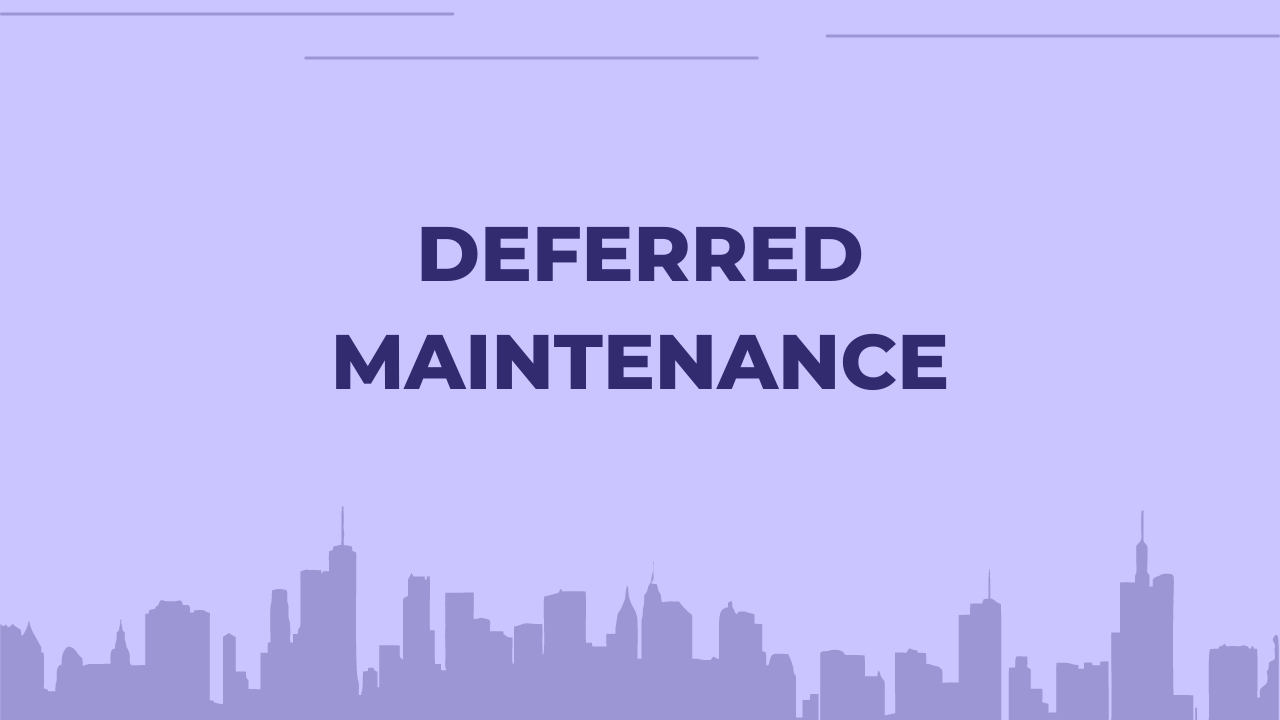
In 2025, deferred maintenance isn’t just an operational inconvenience—it’s a financial liability. According to a 2024 BOMA report, U.S. facility backlogs now exceed $500 billion, with the average organization carrying over 12% of asset value in deferred repairs. That’s money bleeding from portfolios in avoidable downtime, safety risks, and compliance failures.
So what does deferred maintenance really mean? It refers to necessary repairs or replacements that are delayed due to budget constraints, lack of planning, or resource shortages. Every deferred task compounds future cost—what costs $1 today could cost $4–$5 to fix two years later.
The real question is: how do facility leaders reduce the backlog, justify investments, and build an action plan that keeps assets reliable, compliant, and cost-efficient? Let’s break that down.
What is Deferred Maintenance?
Simply put, deferred maintenance means postponing essential upkeep tasks—repairs, inspections, or replacements—beyond their scheduled time. This can be as small as delaying a filter change or as serious as neglecting HVAC, roof, or electrical system repairs.
From a facilities management lens, deferred maintenance is a calculated risk—but one that compounds rapidly. Deferred maintenance backlogs directly affect asset lifespan, occupant satisfaction, and even safety compliance.
Why Deferred Maintenance is Costing Facility Portfolios Millions
One study found that deferred maintenance costs typically compound at 7% per year. When you delay a $10,000 repair, you’re not saving—it’s accruing interest. Here’s how the cost curve works:
- Maintenance deferral multiplies cost over time. Industry studies show every $1 deferred in maintenance can translate into $4–$7 in future repair or replacement costs.
- Hidden expenses add up. Unplanned downtime, emergency repairs, and energy inefficiency quietly drain budgets. A clogged chiller or miscalibrated system can increase utility costs by up to 15–20% annually.
- Capital planning takes a hit. Deferred maintenance creates unpredictable capital spikes instead of steady, planned spending. That volatility disrupts long-term asset management strategies and investor confidence.
How to Reduce Deferred Maintenance
Reducing backlog starts with a system, not a sprint. A Deferred Maintenance Plan helps you prioritize actions based on risk, cost, and impact.
1. Assess and quantify the backlog
Start with a complete audit. Use CMMS or asset management software to inventory all assets and record condition, age, and criticality. Quantify the cost of deferred maintenance—not just repairs, but operational and reputational risk.
2. Categorize by risk and function
Group deferred tasks into categories: safety-critical, compliance-related, operational continuity, and appearance/comfort. Assign each a Risk Priority Number (RPN)—a scoring system based on impact, likelihood, and urgency.
3. Evaluate cost-to-risk ratio
Calculate both short-term and long-term costs for each deferred item. A $50K chiller overhaul might prevent $300K in emergency costs. Rank accordingly to get leadership buy-in.
4. Build phased funding plans
Break large backlogs into phased projects aligned with fiscal years. Use predictive data from CMMS to justify proactive budgets—show how investing now reduces unplanned costs later.
5. Track ROI continuously
Every dollar spent reducing deferred maintenance should have a measurable outcome: downtime reduced, asset life extended, or energy efficiency improved. Capture this data through real-time dashboards.
The ROI of Tackling Deferred Maintenance
Facility executives don’t fund repairs—they fund returns. Framing maintenance backlog reduction as ROI unlocks budget approvals and board support.
- Energy Efficiency ROI: Timely maintenance reduces wasted energy—studies show up to 18% annual savings across HVAC-heavy facilities.
- Asset Longevity ROI: Regular upkeep extends equipment life by 25–35%, delaying expensive replacements.
- Operational Continuity ROI: Reduced downtime and improved tenant satisfaction directly correlate with lease retention and brand trust.
- Risk Avoidance ROI: Each avoided incident—whether a compliance fine or injury—saves tens of thousands in potential loss.
Quantify these metrics in your CMMS to prove impact. ROI storytelling turns maintenance from a cost center into a strategic value lever.
How Facilio Helps in Reducing Deferred Maintenance
Manual tracking and spreadsheets can’t manage multi-site backlogs. That’s why facility leaders are moving to CMMS platforms like Facilio, which bring together maintenance tasks, asset data, vendor performance, and analytics on one screen.
With a connected approach, you can:
- Visualize backlog by category, cost, and site
- Automate task scheduling and follow-up
- Integrate vendor compliance and SLA adherence
- Generate dashboards showing ROI from reduced deferred maintenance
Learn more about how connected CMMS transforms maintenance operations in our blog on preventive vs reactive maintenance.
FAQs
What is the meaning of deferred maintenance?
Deferred maintenance means postponing essential maintenance or repair activities due to limited budgets, manpower, or time. It leads to higher costs and operational risks when left unresolved.
What is the definition of deferred maintenance in facilities management?
In facilities management, deferred maintenance refers to repairs and replacements delayed beyond their optimal schedule. It often results in higher lifecycle costs and reduced asset reliability.
How can you reduce deferred maintenance backlog?
Use a CMMS to prioritize high-risk tasks, allocate phased budgets, and schedule proactive maintenance. Regular condition assessments and data-driven planning reduce backlog sustainably.
What is included in a deferred maintenance plan?
A deferred maintenance plan includes asset inventory, backlog assessment, prioritization criteria, cost estimates, timelines, and performance KPIs.
Why does deferred maintenance matter?
Because it compounds risk and cost. Unattended maintenance leads to asset failures, safety hazards, and budget shocks—impacting both operational continuity and long-term ROI.

